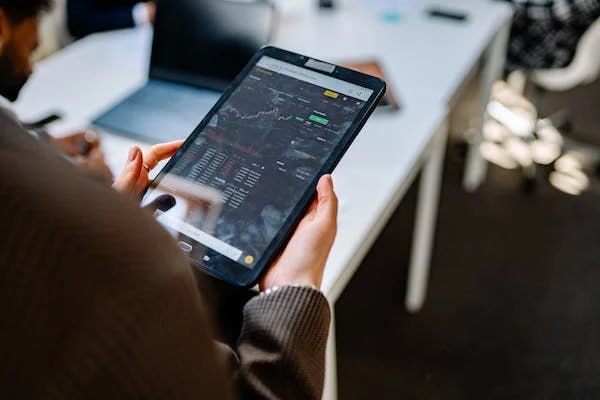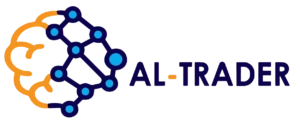In the ever-evolving world of finance, the debate of “AI trading vs manual trading” has become a focal point for investors and traders alike. As we delve into this topic, it’s essential to understand the nuances of both approaches and how they shape the trading landscape.
AI trading, or algorithmic trading, uses computer algorithms and artificial intelligence to execute trades. This method leverages complex mathematical models to make decisions, often at a speed and frequency that is impossible for human traders.
Manual trading, on the other hand, relies on human intelligence, intuition, and decision-making. Traders analyze market data, news, and economic indicators to make informed decisions.

AI Trading vs Manual Trading: Comparing Approaches
Understanding AI Trading
The primary advantage of AI trading lies in its efficiency and ability to process vast amounts of data quickly. It analyzes market trends, predicts price movements, and executes millisecond trades, often capitalizing on opportunities humans may miss.
Pros and Cons of AI Trading
One of the significant benefits of AI trading is the minimization of human emotional bias, leading to more rational decision-making. However, it has its drawbacks. AI systems can be expensive and require continuous updates to remain effective.
Moreover, they may only sometimes understand the nuances of market sentiment as well as a human trader might.
Exploring Manual Trading
The Human Touch in Trading
This approach allows for a more flexible response to market changes and an understanding of the subtleties that may not be evident in raw data alone.
Advantages and Limitations
The biggest strength of manual trading is the trader’s ability to use their judgment and experience, which can sometimes see beyond the numbers. However, this method is more time-consuming and susceptible to emotional biases, which can lead to less rational decisions.
AI Trading vs Manual Trading: Finding the Balance
Combining the Best of Both Worlds
The choice between AI trading and manual trading is not black and white. Many successful traders are finding a middle ground, utilizing AI for data analysis and execution while applying human oversight for strategic decisions. This hybrid approach can offer the speed and efficiency of AI with the critical thinking and adaptability of a human trader.
The Future of Trading
As technology advances, AI trading is likely to become more sophisticated. However, the human element in trading will always have its place. The key to successful trading in the future lies in the ability to integrate AI with human insight effectively.
What are the disadvantages of AI trading?
It Costs a Lot of Money
Imagine you want to buy a cool, high-tech robot to do chores for you. But this robot is super expensive! That’s what happens with AI trading. Companies have to spend a lot of money to get these smart trading robots. Not everyone can afford them, especially smaller companies or people just starting to trade.
Robots Rely Too Much on Their Programming
These trading robots work based on rules they’ve been taught. Sometimes, they might not understand something unexpected in the stock market because they only know what they’ve been programmed with.
If you only learned how to play soccer and someone asked you to play basketball – you’d be confused! That’s why people need to watch what these robots are doing.
Robots Don’t Understand Feelings
Missing the Human Touch
AI trading robots are intelligent but don’t understand human feelings or why people might suddenly decide to buy or sell stocks. They look at numbers and patterns. Understanding people’s feelings and thoughts can be crucial in trading, just like knowing your friend’s favorite ice cream flavor makes it easier to make them happy.
If Everyone Uses the Same Robot, There Could be Problems
Too Many Robots Thinking Alike
What if everyone in your class had the same answer for a tricky question, but it was wrong? That could happen in trading, too. If many trading companies use robots that think the same way, they might all make the same mistake. This could cause significant problems in the stock market, like prices going up and down fast.
Is algo trading better than normal trading?
It’s like asking whether it’s better to have a super-fast robot do your homework or to do it yourself. Algo trading uses computers to buy and sell stocks fast, based on rules and data. On the other hand, average trading is done by people who use their knowledge and feelings to make decisions.
Speed and Efficiency of Algo Trading
Lightning-Fast Decisions
Imagine you’re in a race where you have to solve math problems. Algo trading is like having a calculator that solves these problems instantly. It’s super fast and doesn’t get tired. Algo trading can look at tons of information about stocks in just a few seconds and make quick decisions. This speed helps grab good opportunities in the stock market before they disappear.
Can We Trust Robots More Than People?
Robots Don’t Get Scared or Greedy
One cool thing about algo trading is that robots don’t have feelings. They don’t get scared or too excited. Sometimes, people make mistakes in trading because they get nervous or too eager. Algo trading doesn’t have this problem because it just follows its rules, no matter what.
Can you really make money with automated trading?
It’s like wondering if a robot can do a better job making money in the stock market than a person. Automated trading uses computer programs to buy and sell stocks without a person deciding. Let’s dive into whether this high-tech method helps in making money.
The Allure of Automated Trading
Fast and Furious: The Speed of Robots
Automated trading is like having a super-fast robot playing a video game for you. It can make decisions and act on them much quicker than a human. This speed is helpful in the stock market, where prices change every second. If the robot is programmed well, it can catch good deals quickly, which might help make money.
Understanding the Risks
Not All Robots are Perfect
However, just like any robot, automated trading systems could be better. They work based on how they are programmed. If there’s a mistake in the program or something unexpected happens in the market that the robot isn’t programmed for, it could make wrong decisions. This means there’s a risk of losing money, too.
The Cost Factor
Investing in the Robot
Another thing to think about is the cost. Setting up an automated trading system can be expensive. You need the right technology and sometimes must pay for the trading program. This is like buying a costly video game console to play. You need to earn enough money from trading to cover these costs.
Conclusion:
In conclusion, the debate of AI trading vs manual trading is not about choosing one over the other but understanding how each can complement the other. As we move forward, human and artificial intelligence synergy will likely define the new trading era.
